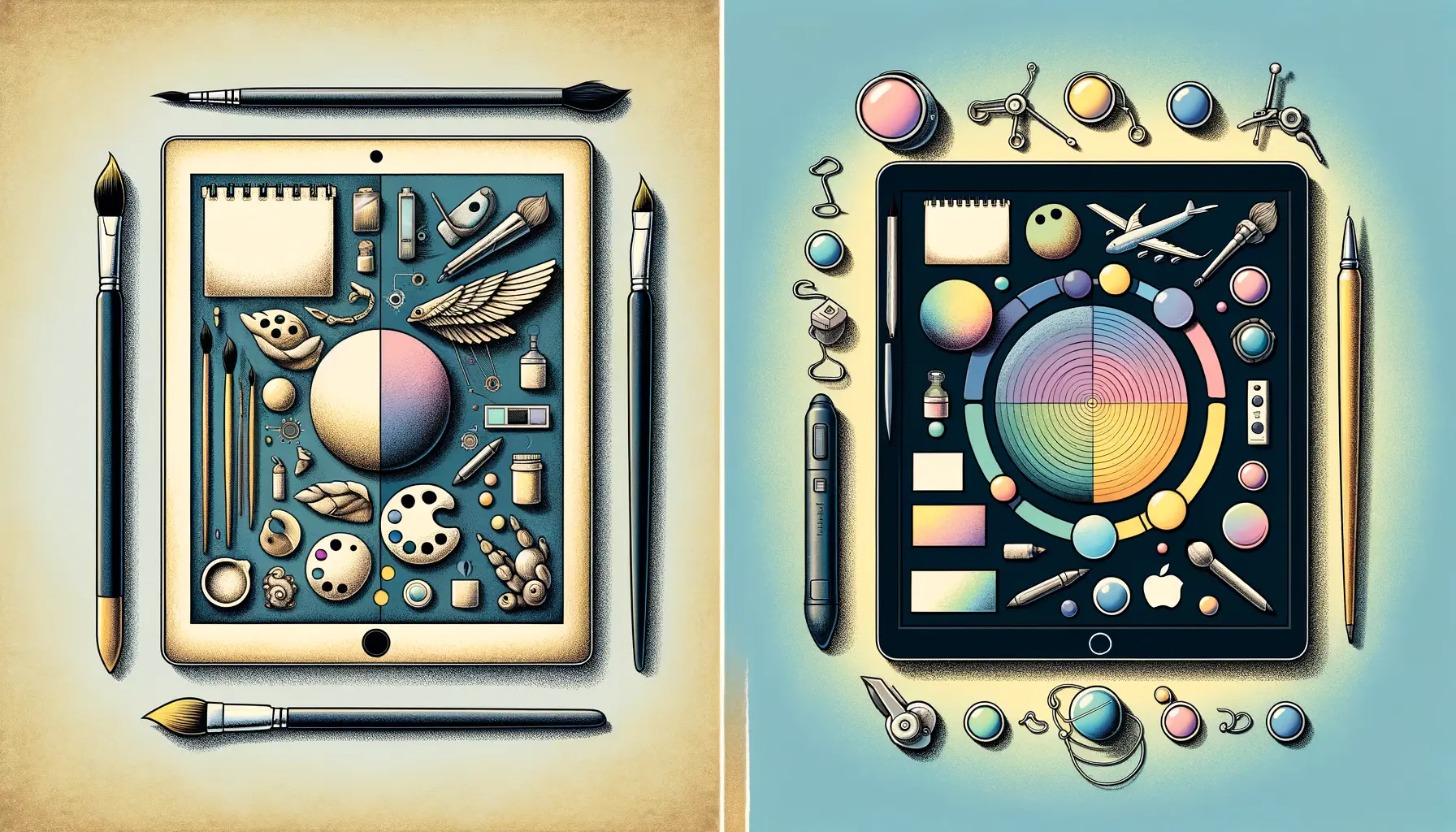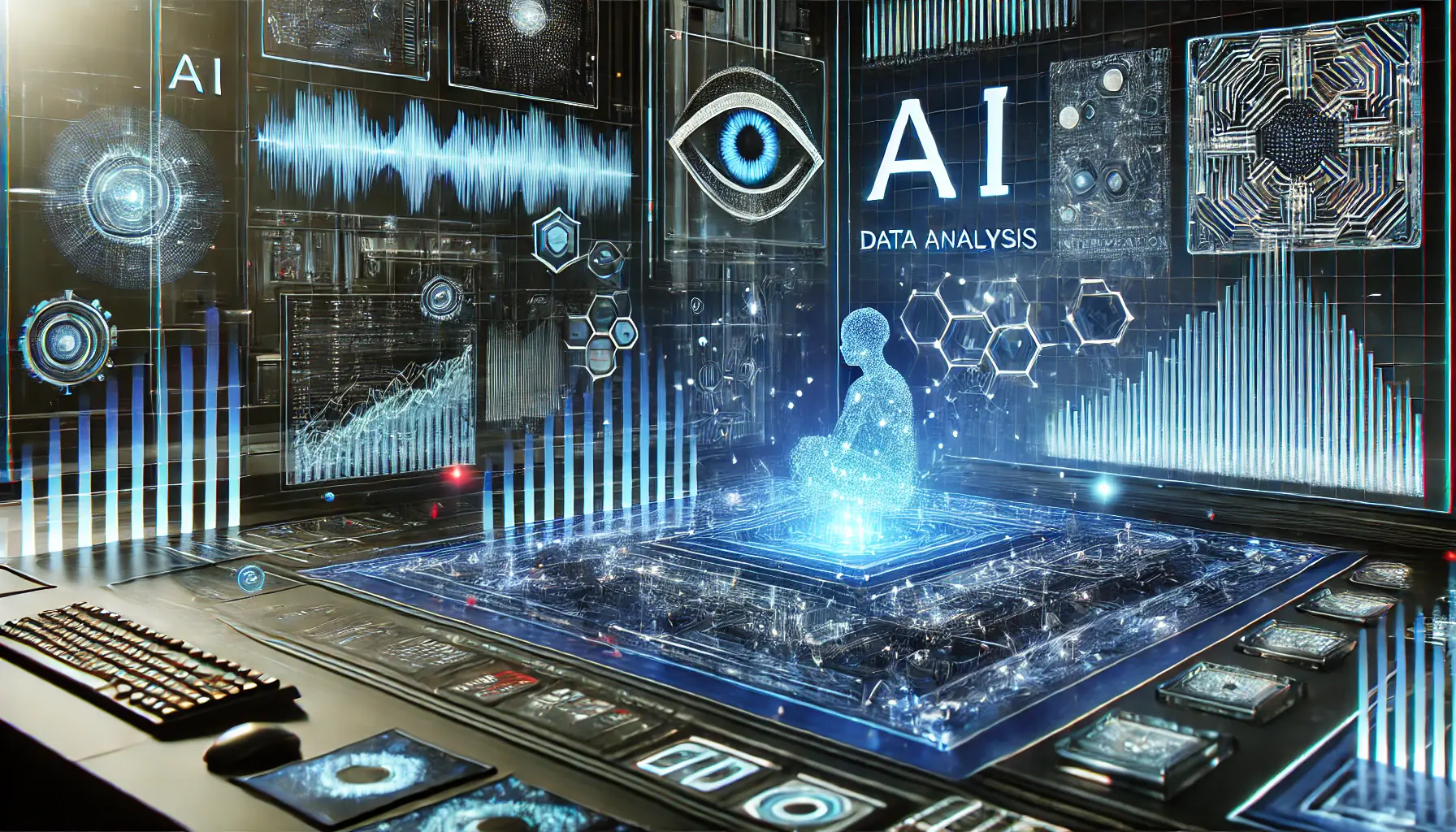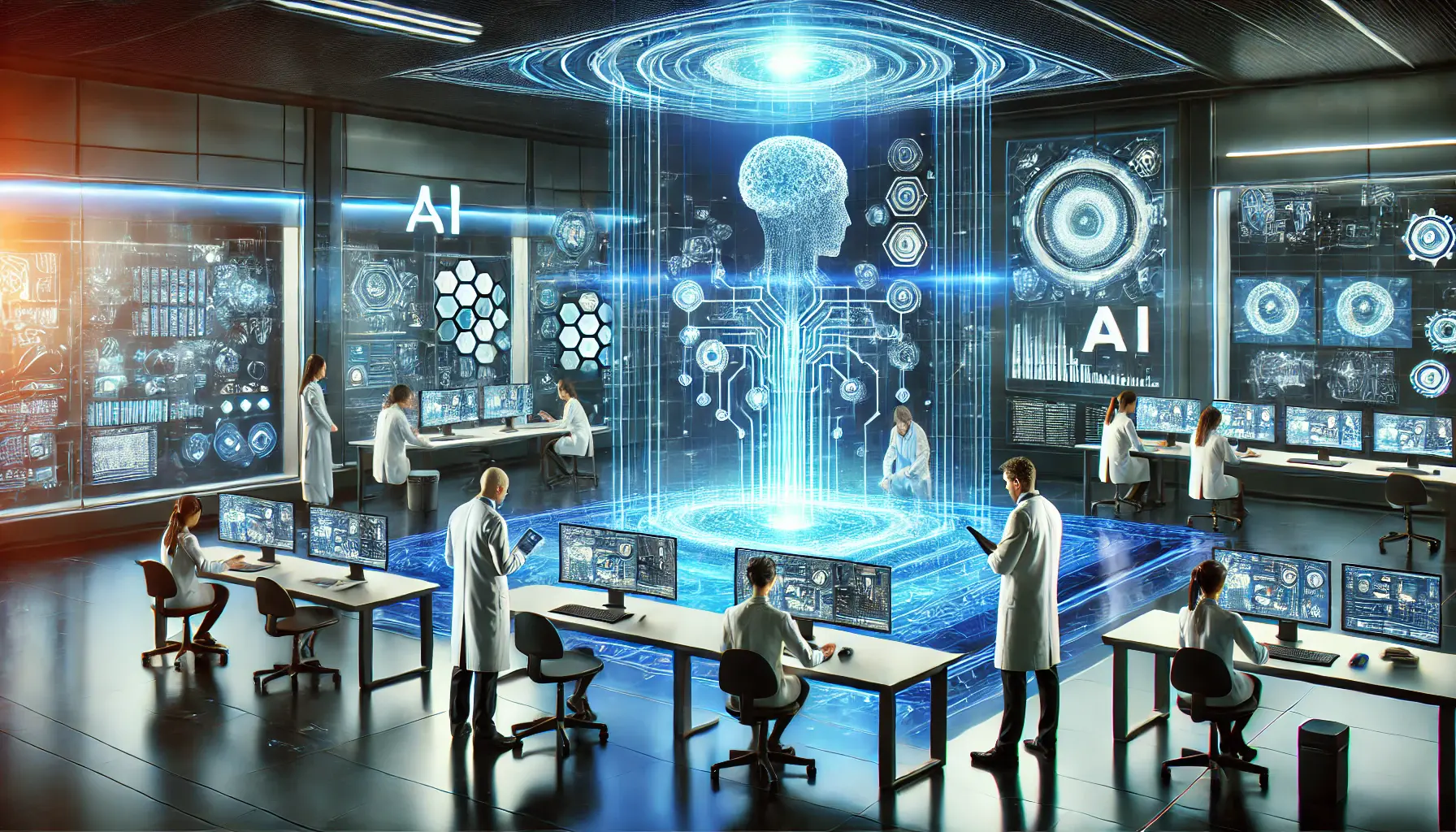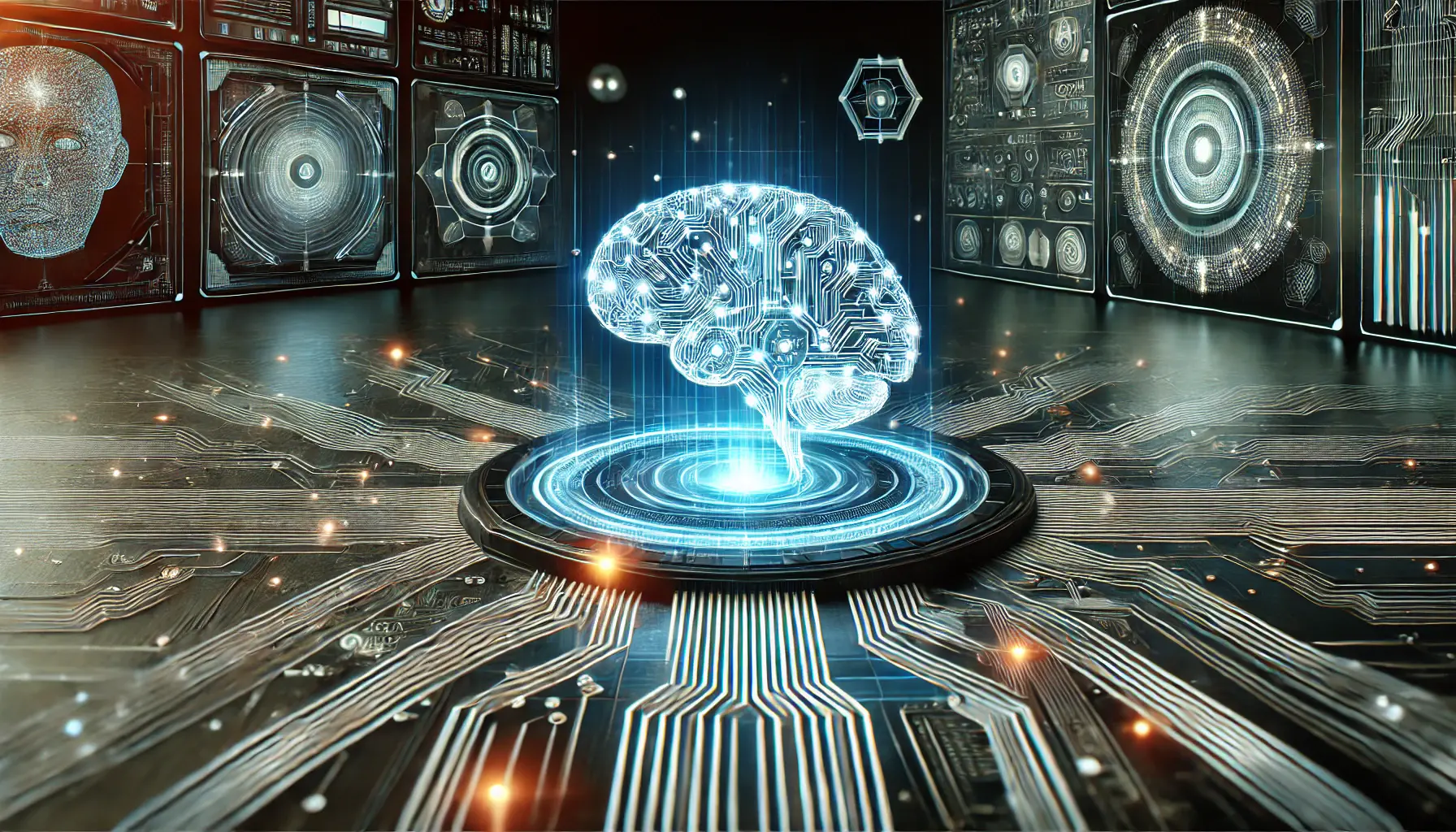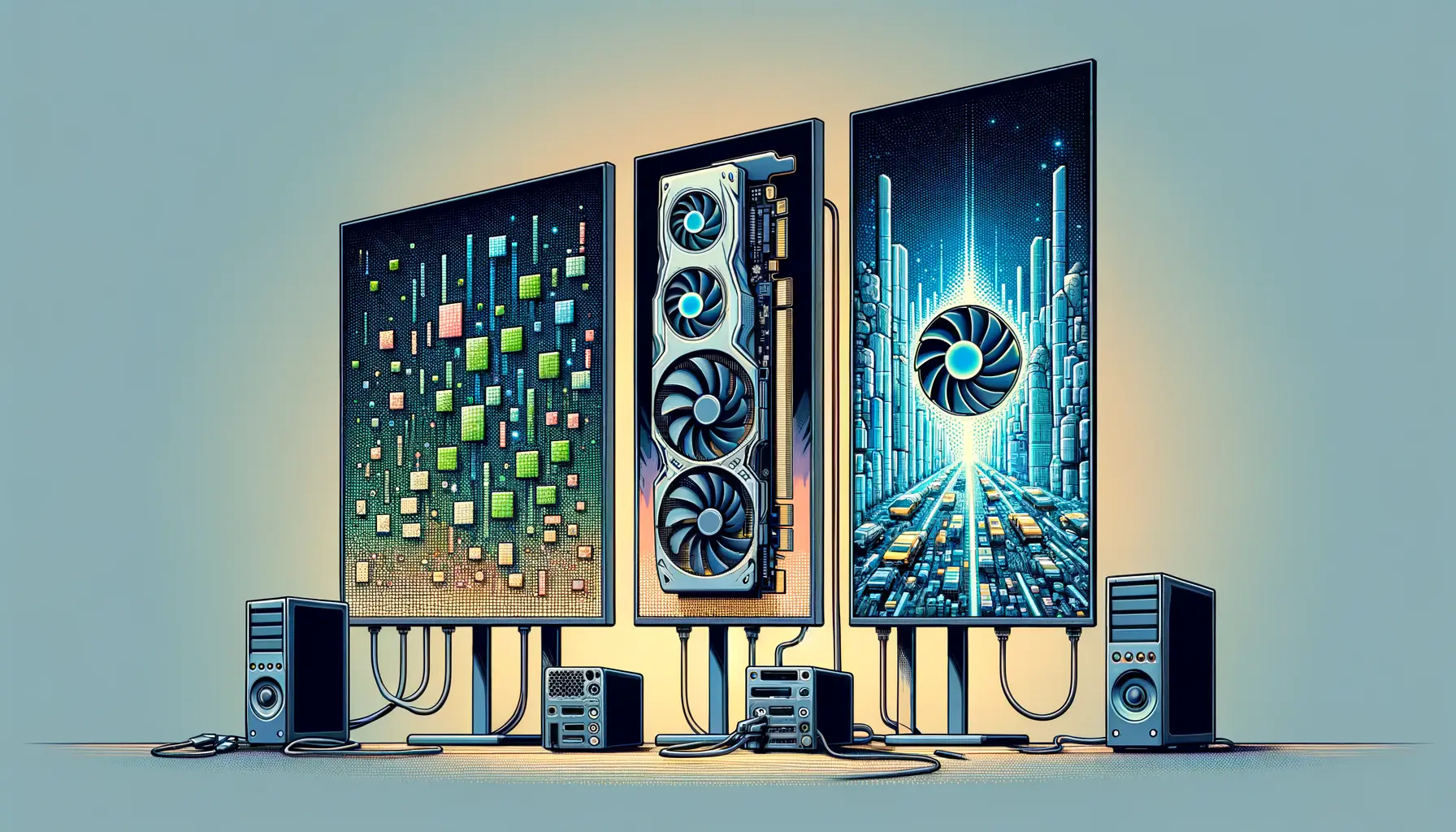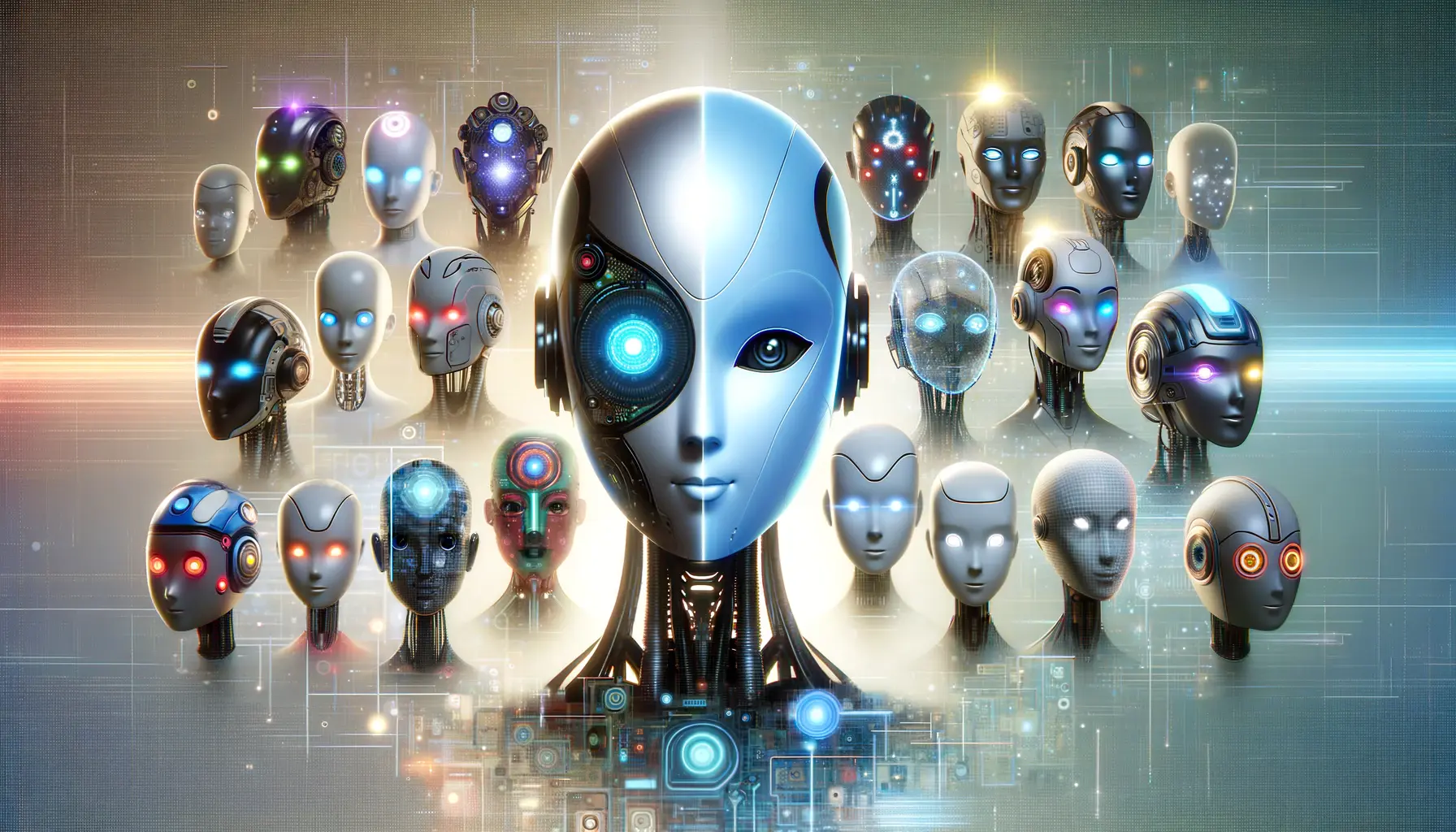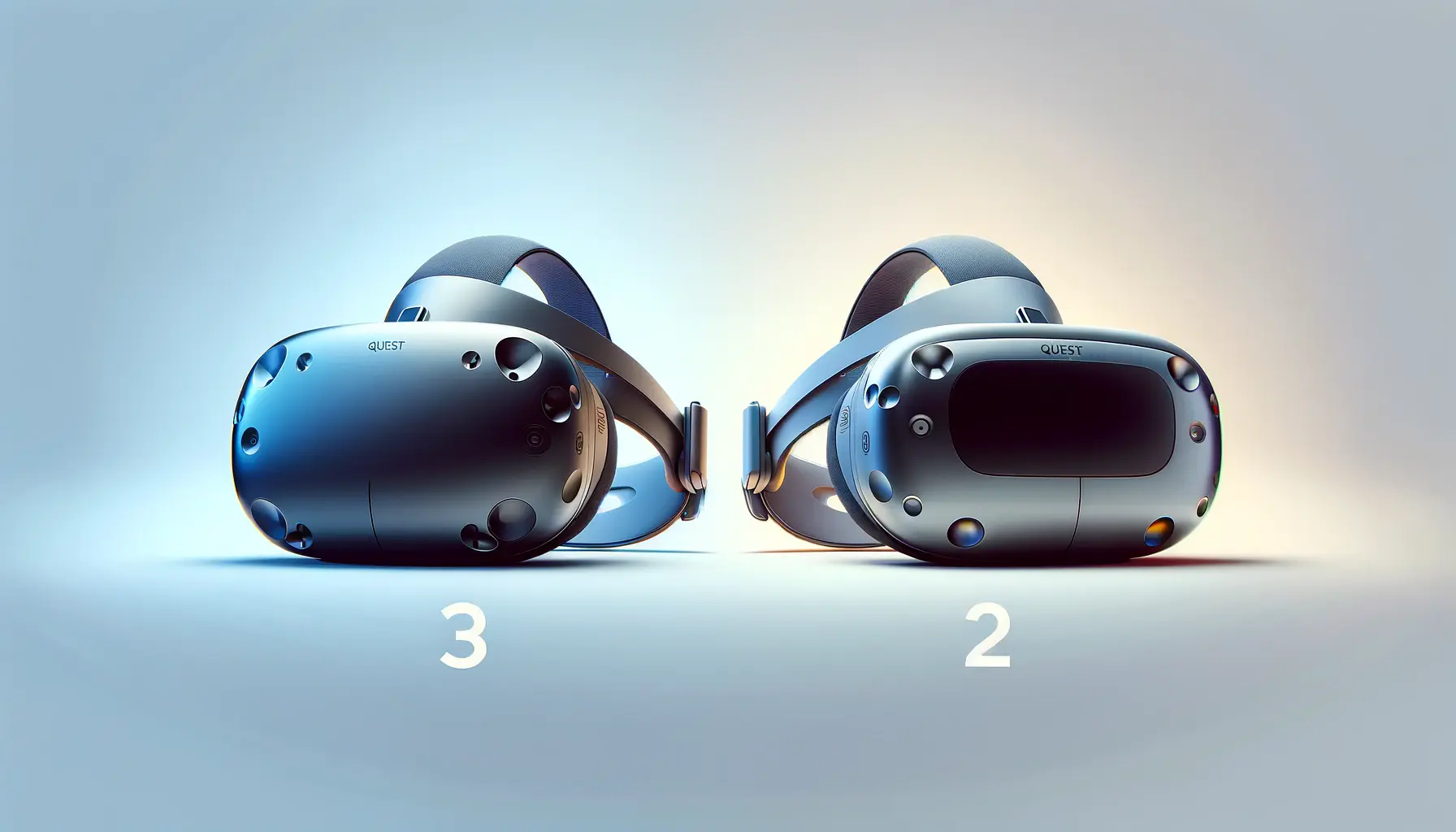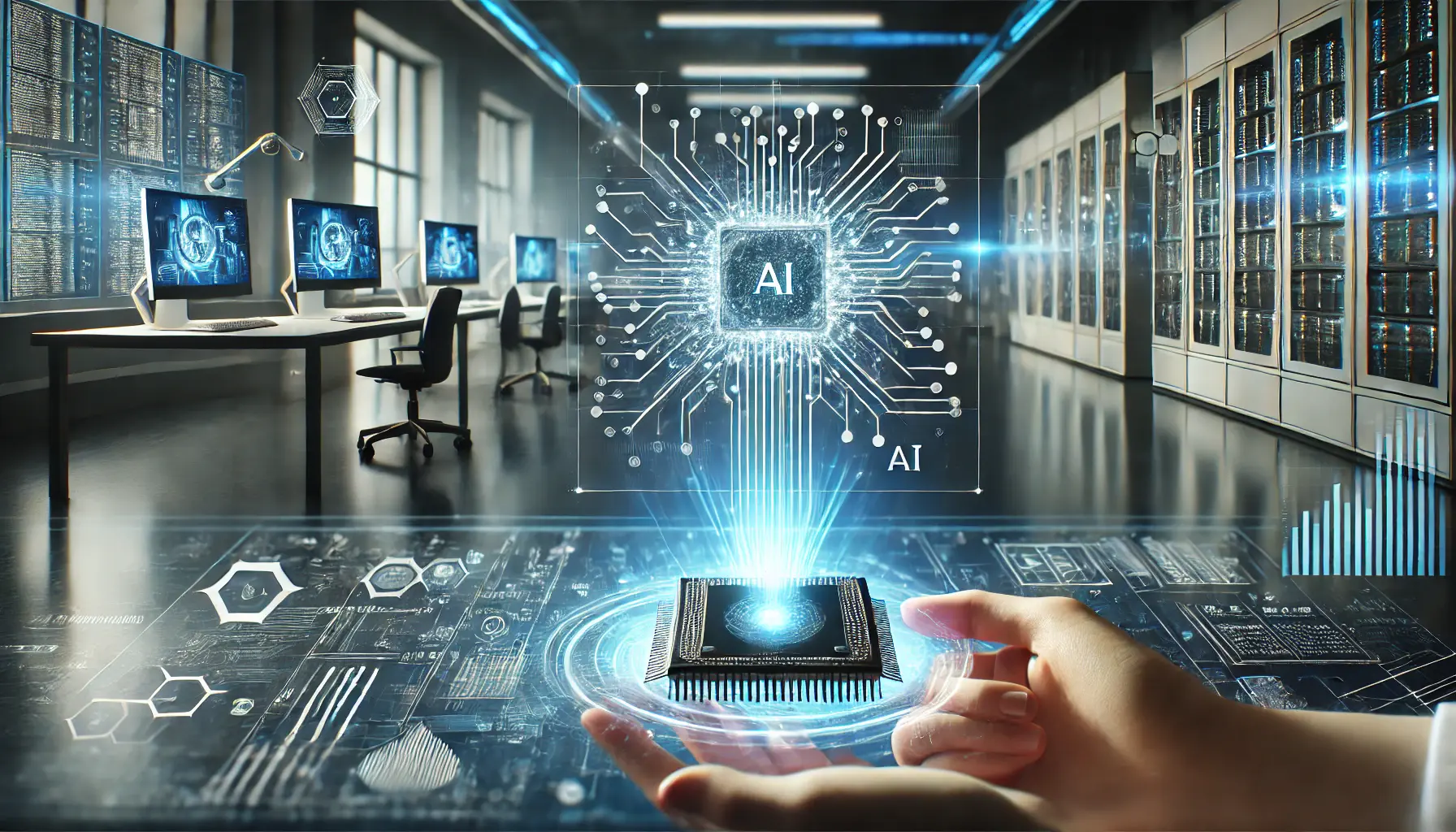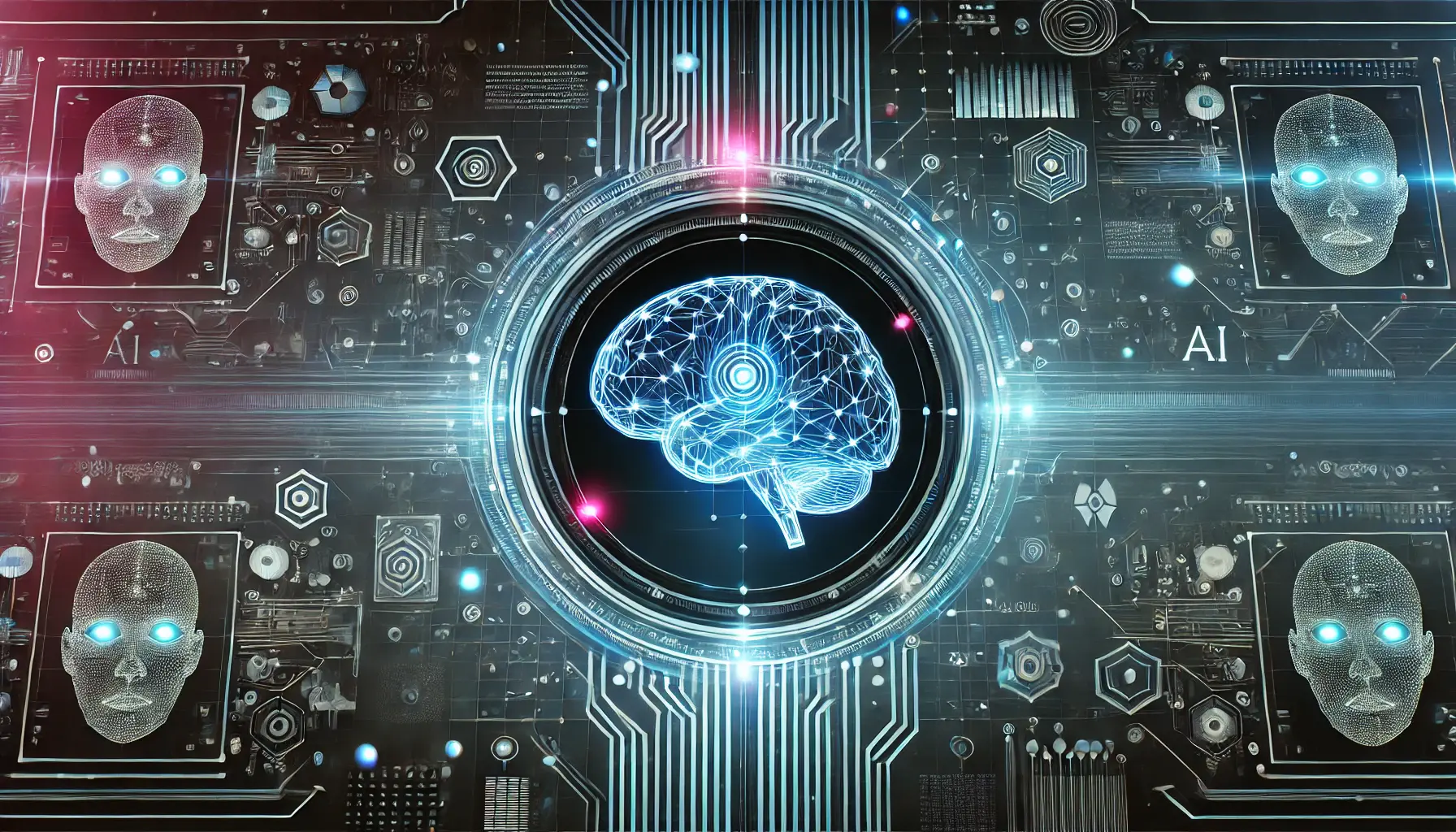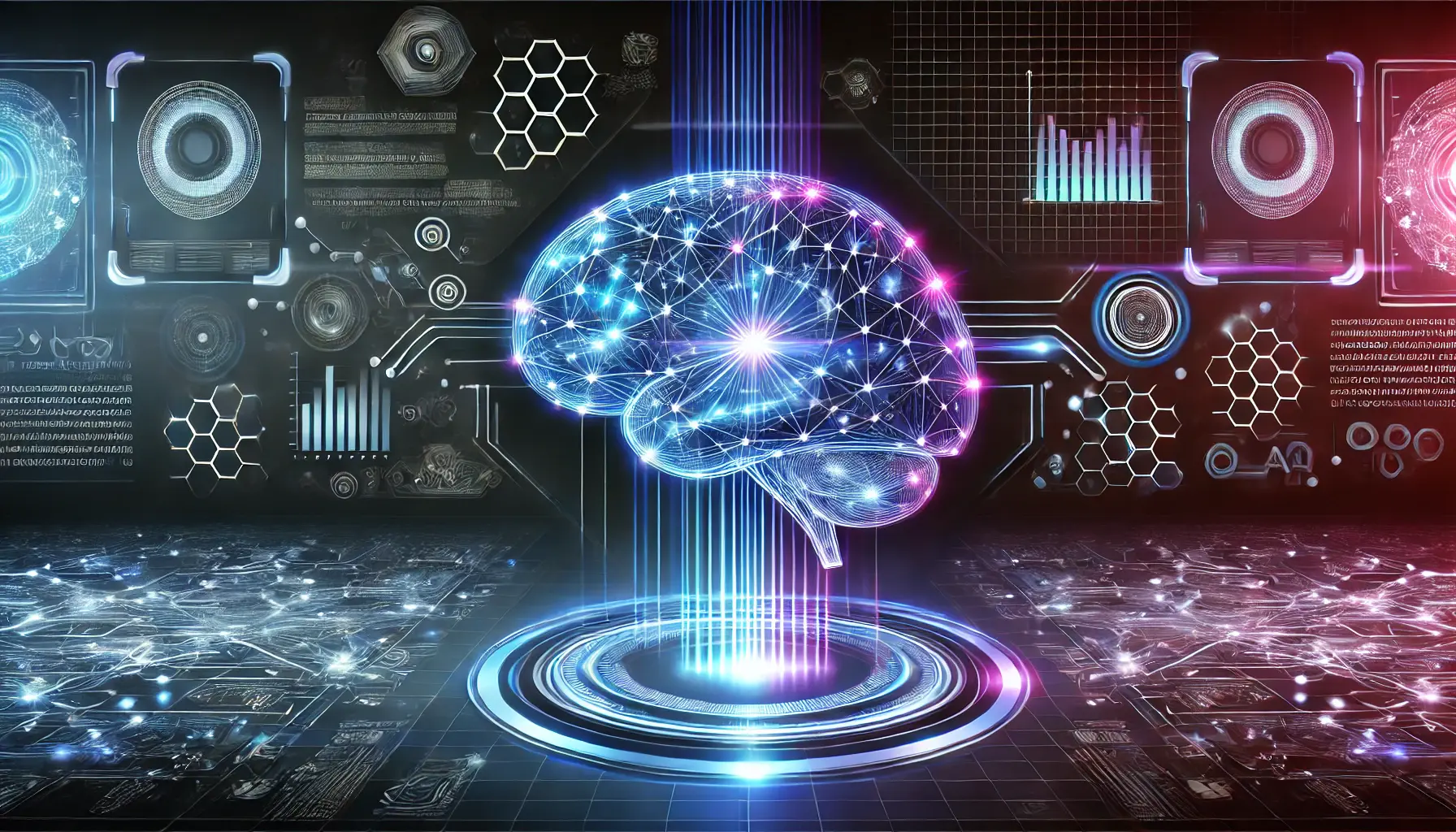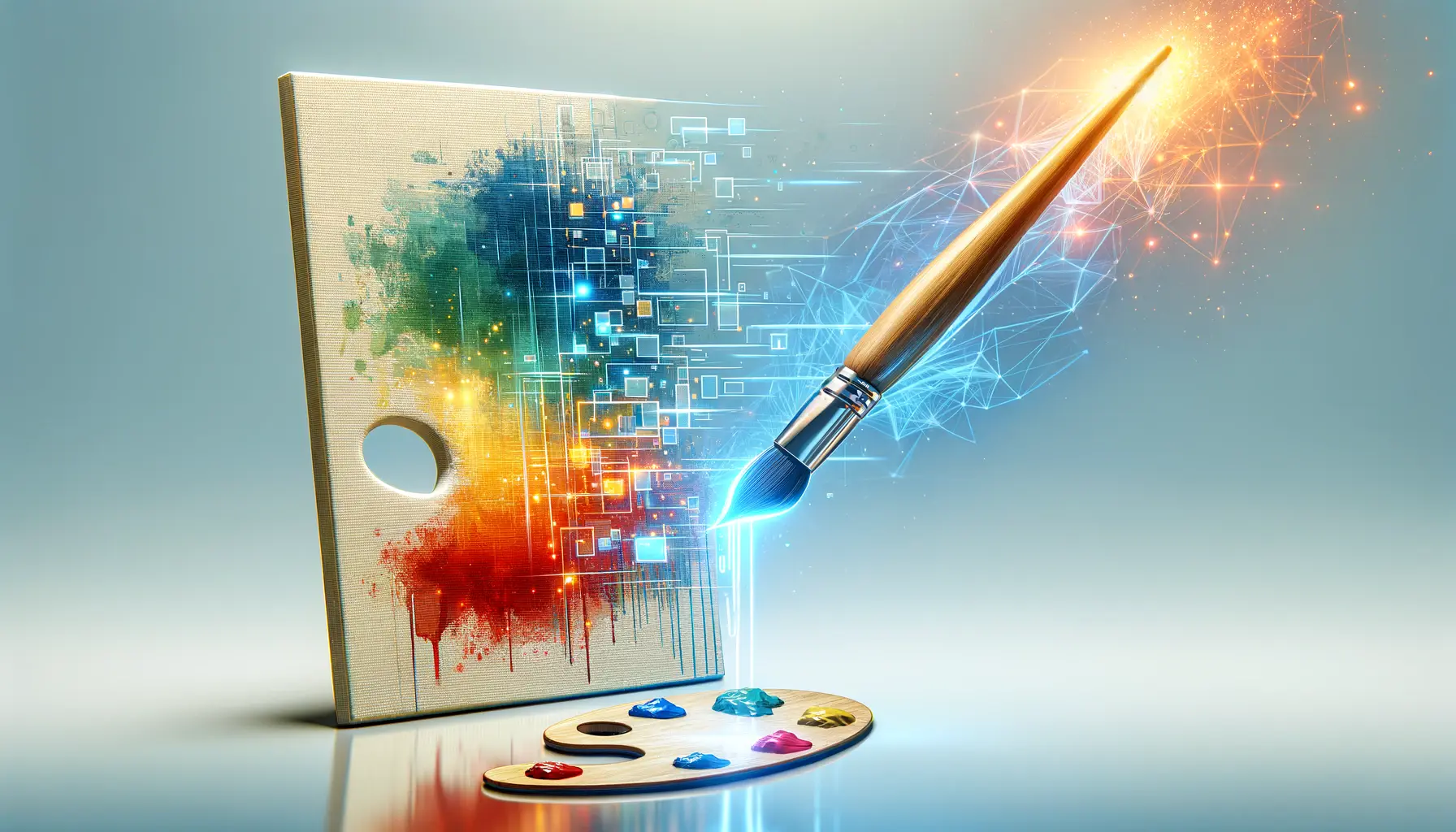The evolution of AI-generated art has been nothing short of revolutionary, with OpenAI’s DALL-E leading the charge in transforming how we conceive and create visual content.
From its initial introduction to the latest iterations, DALL-E has continually set new benchmarks for creativity and capability in the realm of artificial intelligence.
This article delves into the nuances of DALL-E’s versions, highlighting the advancements and new features that each iteration brings to the table.
Our journey through DALL-E’s evolution is not just about understanding the technical upgrades but also appreciating how these changes enhance the creative process for artists, designers, and enthusiasts alike.
At the heart of this exploration is the main keyword “versions,” a term that signifies more than just sequential updates.
It represents the strides in AI that have enabled machines to understand and interpret human prompts in increasingly sophisticated ways, thereby generating images that are more detailed, accurate, and contextually relevant.
The category of ChatGPT’s DALL-E encompasses a fascinating blend of technology and artistry, making it a subject of interest for anyone keen on the intersection of AI and creative expression.
As we compare the versions of DALL-E, we aim to uncover the essence of what makes each version unique and how they contribute to the broader narrative of AI’s role in creative industries.
DALL-E and Its Impact
The Genesis of DALL-E
The inception of DALL-E by OpenAI marked a significant milestone in the field of artificial intelligence.
Named whimsically after the famous surrealist artist Salvador Dalí and Pixar’s animated robot WALL-E, DALL-E was designed to generate images from textual descriptions, bridging the gap between words and visuals in an unprecedented manner.
This capability not only showcased the potential of AI in understanding complex human instructions but also opened up new avenues for creative exploration.
The initial version of DALL-E laid the groundwork for what would become a rapidly evolving technology, setting the stage for future enhancements that would further blur the lines between human and machine-generated art.
Revolutionizing Creative Expression
DALL-E’s introduction revolutionized the way we think about art and creativity.
By enabling the generation of images from textual prompts, it provided artists and creators with a powerful tool to visualize concepts and ideas without the constraints of traditional artistic skills.
This democratization of creative expression meant that anyone with an idea could bring it to life, fostering a new era of creativity that transcends the limitations of human skill and imagination.
The impact of DALL-E extends beyond individual creativity, influencing industries such as advertising, design, and entertainment, where the ability to rapidly prototype and visualize ideas can significantly enhance the creative process.
DALL-E’s ability to generate images from text has democratized creative expression, making it accessible to a broader audience and impacting various industries.
Evolution of DALL-E Versions
The journey from the original DALL-E to its subsequent versions illustrates a trajectory of continuous improvement and innovation.
Each version has built upon the last, introducing enhancements that have significantly improved the quality, versatility, and applicability of the generated images.
This evolution reflects OpenAI’s commitment to pushing the boundaries of what AI can achieve in the realm of creative digital art.
From DALL-E to DALL-E 2
The leap from the original DALL-E to DALL-E 2 marked a significant milestone in AI-driven art generation.
DALL-E 2 introduced a range of improvements, including higher resolution images, better understanding of complex prompts, and more nuanced interpretations of artistic styles.
These advancements were not just technical feats; they represented a deeper comprehension of context, texture, and the subtleties of human creativity.
The enhancements in DALL-E 2 allowed for a broader spectrum of artistic expression, enabling creators to explore more detailed and sophisticated visual narratives.
- Higher Resolution: The increase in image resolution meant that the artworks generated were clearer, more detailed, and suitable for a wider range of applications, from digital art exhibitions to high-quality print media.
- Advanced Understanding: With improved AI models, DALL-E 2 could grasp complex prompts better, translating intricate descriptions into visually accurate representations.
- Artistic Flexibility: The ability to mimic various artistic styles with greater accuracy opened up new possibilities for creators to experiment with different visual aesthetics seamlessly.
Introducing DALL-E 3
The introduction of DALL-E 3 further elevated the capabilities of this AI system.
Building on the strengths of its predecessor, DALL-E 3 focused on refining the quality of generated images, enhancing the model’s ability to understand and interpret prompts, and reducing the time it took to produce images.
These improvements were aimed at making DALL-E even more user-friendly and accessible, allowing for real-time collaboration between AI and creators in the ideation and creation process.
- Quality Enhancement: DALL-E 3 pushed the boundaries of image quality, producing even more lifelike and visually compelling images that could easily be mistaken for photographs or high-quality artworks.
- Prompt Interpretation: The enhanced model offered an even deeper understanding of textual prompts, enabling it to generate images that more accurately reflected the creator’s intent.
- Speed Improvements: Faster image generation times in DALL-E 3 meant that artists and designers could iterate more rapidly, exploring a wider range of ideas in a shorter timeframe.
The evolution from DALL-E to DALL-E 3 showcases OpenAI’s dedication to enhancing the creative potential of AI, making each version more capable and accessible to users.
Key Features and Capabilities
The advancements in DALL-E’s versions have introduced a plethora of features and capabilities, each designed to enhance the creative process and offer more control and flexibility to the user.
These features not only demonstrate the technical prowess of OpenAI’s AI models but also underscore the potential of AI to act as a co-creator in the artistic process.
Let’s delve into some of the key features and capabilities that have defined the evolution of DALL-E.
Enhanced Resolution and Detail
One of the most notable improvements across DALL-E versions has been the significant enhancement in image resolution and detail.
This leap forward has allowed creators to generate images that are not only visually stunning but also rich in detail, making them suitable for professional-grade applications.
The high-resolution outputs of DALL-E 2 and 3 have opened up new possibilities for digital art, print media, and even animation, where clarity and detail are paramount.
- Clarity: The images produced by the latest versions of DALL-E boast unparalleled clarity, enabling intricate designs and complex compositions to be rendered with precision.
- Detail: The depth of detail achievable allows for nuanced textures, realistic lighting, and shadow effects, contributing to the overall realism and aesthetic appeal of the generated images.
Improved Prompt Interpretation
The ability of DALL-E to interpret and act on textual prompts has seen remarkable improvements.
This capability is at the core of what makes DALL-E so revolutionary: the ability to translate textual descriptions into detailed images.
With each version, DALL-E has become more adept at understanding nuances, context, and even abstract concepts, allowing users to explore a wider range of creative expressions through simple text prompts.
- Nuanced Understanding: DALL-E’s AI models have been trained on diverse datasets, enabling them to grasp a wide array of themes, styles, and concepts from textual prompts.
- Contextual Relevance: The images generated are not only visually accurate but also contextually relevant, reflecting a deep understanding of the prompt’s intended meaning and implications.
Artistic Style Emulation
Another groundbreaking feature of DALL-E is its ability to emulate various artistic styles.
From classical art to contemporary digital designs, DALL-E can mimic styles with astonishing accuracy.
This feature allows artists and designers to experiment with different aesthetics, merge styles, or even create new ones, all while maintaining the integrity of their original vision.
The versatility in style emulation has made DALL-E an invaluable tool for creative experimentation and exploration.
- Style Diversity: Whether it’s replicating the brushstrokes of Van Gogh or the surreal landscapes of Dalí, DALL-E can capture the essence of various artistic styles.
- Creative Experimentation: Users can combine elements from different styles or create entirely new ones, pushing the boundaries of traditional art forms.
The continuous enhancement of features and capabilities in DALL-E versions underscores the evolving relationship between AI and creativity, offering artists and designers new ways to explore and express their ideas.
Comparative Analysis of Versions
Understanding the differences between DALL-E versions is crucial for appreciating the strides made in AI-driven creative technology.
Each version of DALL-E has built upon the successes and learnings of its predecessors, leading to significant improvements in image generation capabilities.
This comparative analysis aims to highlight the key distinctions and advancements that each version brought to the table, providing insight into the evolution of this groundbreaking technology.
DALL-E 1 vs. DALL-E 2
The transition from DALL-E 1 to DALL-E 2 was marked by substantial enhancements in image quality, resolution, and the AI’s ability to understand complex prompts.
DALL-E 2 introduced a more sophisticated model that could generate higher resolution images, offering greater detail and clarity.
This version also improved the AI’s comprehension of textual prompts, enabling it to produce images that were more aligned with the user’s intentions.
The leap in technology from DALL-E 1 to DALL-E 2 set a new standard for AI-generated art, making it more accessible and applicable for professional use.
- Image Quality and Resolution: DALL-E 2’s ability to produce high-resolution images was a game-changer, significantly enhancing the visual appeal and usability of the generated art.
- Prompt Understanding: The improved AI model in DALL-E 2 could interpret prompts more effectively, leading to more accurate and relevant image outputs.
DALL-E 2 vs. DALL-E 3
Building on the foundation laid by DALL-E 2, DALL-E 3 further refined the image generation process.
This version focused on increasing the speed of image production, enhancing the model’s ability to understand nuanced prompts, and introducing more diversity in the styles and themes that could be explored.
DALL-E 3’s advancements in prompt interpretation and speed have made it an even more powerful tool for creators, allowing for rapid prototyping and exploration of ideas.
- Speed of Image Generation: The increased speed with which DALL-E 3 can produce images has streamlined the creative process, enabling faster iterations and explorations.
- Nuanced Prompt Interpretation: DALL-E 3’s enhanced understanding of prompts allows for a greater range of creative expression and more precise execution of complex ideas.
The evolution from DALL-E 1 through DALL-E 3 represents not just technological advancements but also a deepening understanding of how AI can collaborate with human creativity to push the boundaries of art and design.
Applications and Use Cases
The versatility of DALL-E across its versions has opened up a myriad of applications and use cases, spanning various industries and creative domains.
From graphic design and advertising to storytelling and educational tools, the impact of DALL-E’s technology is widespread.
This section explores some of the key applications and use cases of DALL-E, illustrating the broad scope of its influence on creative and professional practices.
Graphic Design and Advertising
In the realms of graphic design and advertising, DALL-E has become an indispensable tool for creating compelling visuals that capture attention and convey messages effectively.
The ability to generate high-quality images from textual descriptions allows designers to quickly bring their ideas to life, streamlining the creative process and enabling more dynamic and responsive design practices.
For advertisers, DALL-E’s capacity to produce a wide range of styles and concepts means that campaigns can be more visually diverse and tailored to specific audiences or themes.
- Branding: DALL-E helps in creating unique brand assets, including logos, mascots, and thematic illustrations, enhancing brand identity and engagement.
- Marketing Campaigns: The technology enables the rapid production of visual content for marketing campaigns, allowing for a high degree of customization and creativity.
Content Creation and Storytelling
DALL-E’s impact extends into content creation and storytelling, where it offers new ways to visualize narratives and concepts.
Writers, educators, and content creators can use DALL-E to generate illustrations, storyboards, and visual aids that complement their narratives, making stories more engaging and accessible.
This capability is particularly valuable in educational settings, where visual content can enhance learning and retention by providing visual context to complex ideas.
- Educational Materials: DALL-E can create detailed illustrations for textbooks, online courses, and educational presentations, making learning more interactive and enjoyable.
- Storytelling: Authors and storytellers can use DALL-E to visualize scenes, characters, and settings, enriching the storytelling experience with vivid imagery.
Innovation in Art and Creativity
At its core, DALL-E is a tool for artistic exploration and innovation, enabling artists to experiment with new forms of expression and creativity.
By providing a platform for combining and transforming visual elements in novel ways, DALL-E encourages artists to push the boundaries of traditional art forms.
The technology’s ability to interpret and visualize complex concepts and styles has led to the creation of artworks that challenge our perceptions of art and the role of AI in the creative process.
- Artistic Exploration: Artists use DALL-E to explore new styles, themes, and visual narratives, expanding the possibilities of digital art.
- Collaborative Art: DALL-E facilitates collaborative projects between humans and AI, leading to unique creations that reflect a synergy of human creativity and machine intelligence.
DALL-E’s wide range of applications and use cases demonstrates its transformative potential across industries, redefining how we approach creativity, design, and storytelling.
Challenges and Limitations
While DALL-E’s advancements have ushered in a new era of creative possibilities, they also come with their own set of challenges and limitations.
Understanding these hurdles is crucial for both users and developers as they navigate the complexities of AI-generated art.
This section outlines some of the primary challenges and limitations associated with DALL-E, providing a balanced view of its capabilities and areas for improvement.
Ethical Considerations
One of the most significant challenges surrounding DALL-E and similar AI technologies involves ethical considerations, particularly concerning copyright, originality, and the potential for misuse.
As AI becomes more capable of creating complex and nuanced artworks, questions arise about the ownership of these creations and the rights of the original artists whose styles may be emulated.
Additionally, the potential for generating misleading or harmful content raises concerns about the responsible use of such technologies.
- Copyright and Originality: Navigating the fine line between inspiration and infringement is a complex issue, with implications for artists and creators worldwide.
- Content Misuse: Ensuring that AI-generated content is used ethically and responsibly remains a challenge, with the need for robust guidelines and safeguards.
Technical Limitations
Despite the impressive capabilities of DALL-E, there are still technical limitations that affect its performance and the quality of the generated images.
These limitations include the resolution of images, the AI’s understanding of highly abstract or complex prompts, and the occasional generation of nonsensical or irrelevant content.
Addressing these technical challenges is an ongoing process, with each version of DALL-E aiming to overcome these hurdles and improve the user experience.
- Resolution and Detail: While the image quality has significantly improved, achieving the highest levels of detail and realism for certain applications remains a challenge.
- Abstract Concepts: DALL-E sometimes struggles with abstract or highly conceptual prompts, leading to outputs that may not fully capture the intended idea.
Accessibility and Usability
Ensuring that DALL-E is accessible and user-friendly for a wide range of users is another challenge.
While significant strides have been made in making the technology more intuitive, there is still work to be done in terms of user interface design, prompt optimization, and providing educational resources for new users.
Making DALL-E more accessible to non-technical users will be key to unlocking its full potential as a creative tool.
- User Interface: Creating an interface that is both powerful and easy to use for individuals without a technical background is crucial.
- Educational Resources: Providing comprehensive guides and tutorials can help new users leverage DALL-E’s capabilities more effectively.
Despite its groundbreaking capabilities, DALL-E is not without its challenges and limitations, highlighting the need for ongoing development and ethical considerations.
Future Directions and Potential
The journey of DALL-E from its inception to the latest version has been marked by rapid advancements and an expanding horizon of possibilities.
As we look to the future, the potential for further innovation and application of DALL-E and similar AI technologies is immense.
This section explores the anticipated future directions of DALL-E, considering both the technological advancements on the horizon and the broader implications for creativity, art, and design.
Technological Advancements
The continuous development of AI and machine learning models promises even more sophisticated versions of DALL-E in the future.
These advancements are expected to address current limitations, such as further improving image resolution, enhancing the AI’s understanding of complex prompts, and reducing biases in generated content.
Additionally, the integration of DALL-E with other AI technologies could lead to more interactive and immersive creative experiences, blurring the lines between digital and physical art forms.
- Increased Resolution and Realism: Future versions of DALL-E are likely to produce images with even higher resolution and more lifelike details, pushing the boundaries of digital art.
- Enhanced Prompt Interpretation: As AI models become more advanced, their ability to understand and execute complex prompts will improve, leading to more accurate and creative outputs.
Expanding Creative Horizons
The potential of DALL-E to transform creative industries and practices is only beginning to be realized.
As the technology becomes more accessible and integrated into creative workflows, we can expect to see a surge in innovative applications, from personalized art and design to dynamic storytelling and beyond.
The democratization of creativity, where anyone can bring their visions to life with the help of AI, could lead to a renaissance of sorts in art and design, characterized by unprecedented diversity and experimentation.
- Personalized Art and Design: DALL-E could enable the creation of highly personalized art and design works, tailored to individual preferences and contexts.
- Dynamic Storytelling: With DALL-E, storytellers could dynamically generate visual content that adapts to narrative changes, offering immersive and interactive storytelling experiences.
Bridging Art and Technology
The evolution of DALL-E reflects a broader trend towards the convergence of art and technology, where the boundaries between creator and tool become increasingly blurred.
This convergence has the potential to not only enhance artistic expression but also to foster a deeper understanding and appreciation of the role of AI in creative processes.
As we move forward, the collaboration between humans and AI in the realm of art and design promises to unlock new realms of creativity, challenging our perceptions of what is possible and inspiring future generations of artists and designers.
- Collaborative Creativity: The future of DALL-E lies in its ability to act as a collaborator, enhancing and expanding the creative capabilities of humans.
- Innovative Art Forms: The integration of AI like DALL-E in creative processes is likely to give rise to new art forms and expressions that transcend traditional mediums.
The future of DALL-E and AI-driven creativity is bright, with endless possibilities for technological advancements and the transformation of creative practices across industries.
Embracing the Future with DALL-E
The exploration of DALL-E’s versions from its inception to the present day reveals a trajectory of relentless innovation and expanding capabilities.
This journey through the evolution of one of the most groundbreaking AI technologies in creative art generation underscores not just the technical advancements but also the shifting landscape of creativity itself.
As we stand on the cusp of new developments in AI, the potential of technologies like DALL-E to redefine artistic expression and creative processes is both exhilarating and profound.
The Path Forward
The future of DALL-E and similar AI-driven tools is bright, filled with the promise of overcoming current limitations and unlocking new creative potentials.
The ongoing advancements in AI technology suggest a future where DALL-E’s capabilities in understanding complex prompts, generating high-resolution images, and emulating diverse artistic styles will only become more refined.
This progression points towards a future where the collaboration between human creativity and AI becomes even more seamless and intuitive, offering creators unprecedented tools to bring their visions to life.
Expanding Creative Boundaries
The impact of DALL-E extends beyond the technical realm, challenging our perceptions of creativity, originality, and the role of technology in art.
By democratizing access to high-quality visual content generation, DALL-E has opened the door for a wider audience to engage in creative expression.
This shift not only broadens the scope of who can create art but also what constitutes art in the digital age.
As we move forward, the integration of DALL-E into various creative industries is poised to spark a renaissance of digital art and design, marked by diversity, innovation, and a fusion of human and AI creativity.
- The continuous improvement of DALL-E’s versions highlights the potential for even more sophisticated interactions between AI and human creativity.
- The democratization of creative tools like DALL-E is reshaping the landscape of art and design, making it more inclusive and diverse.
- The future integration of DALL-E with other technologies promises to create new forms of art and storytelling, blurring the lines between the digital and physical worlds.
In conclusion, the evolution of DALL-E from its first version to the latest iteration is a testament to the transformative power of AI in the creative domain.
As we look to the future, the potential for further advancements in DALL-E’s technology holds the promise of not only enhancing the capabilities of artists and designers but also of redefining the very essence of creativity.
The journey of DALL-E is far from over, and its continued development will undoubtedly shape the future of art, design, and creative expression in ways we can only begin to imagine.
DALL-E Versions: Frequently Asked Questions
Explore the most common inquiries about the revolutionary DALL-E versions, providing insights into its capabilities, usage, and future directions.
DALL-E currently supports generating images in square formats, optimized for consistency and quality in output.
As of the latest updates, DALL-E can emulate various artistic styles, though direct style transformation features are under continuous development.
The most current version is DALL-E 3, with each iteration introducing significant improvements in image quality and AI understanding.
Yes, the DALL-E API is available, offering developers access to its powerful image generation capabilities for integration into various applications.
Edit functions and variations features are available, enhancing the flexibility and creativity possible with DALL-E’s generated images.
DALL-E’s content policy mandates G-rated outputs, emphasizing the importance of ethical and responsible use of AI-generated imagery.
Access to DALL-E can be obtained through OpenAI’s platform, with various options for use, including trial and subscription models.
Yes, DALL-E is designed to interpret and visualize abstract concepts, translating complex ideas into detailed and contextually relevant images.
